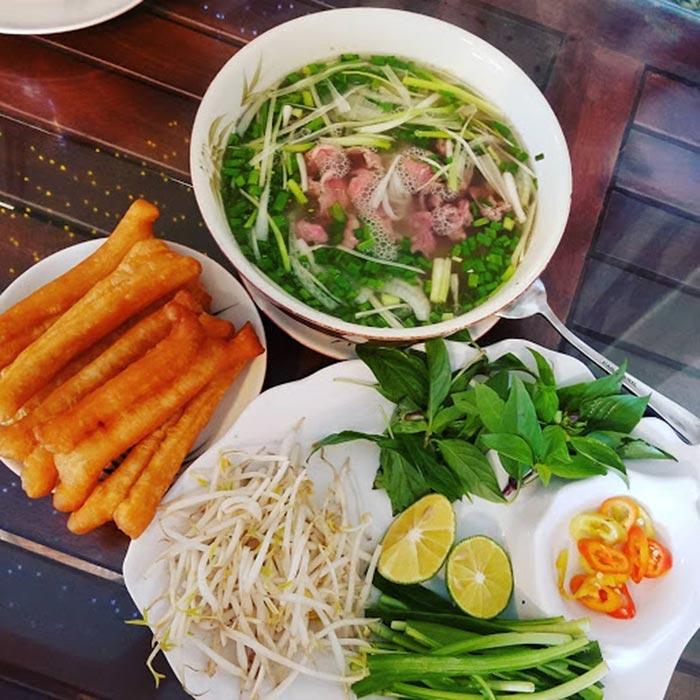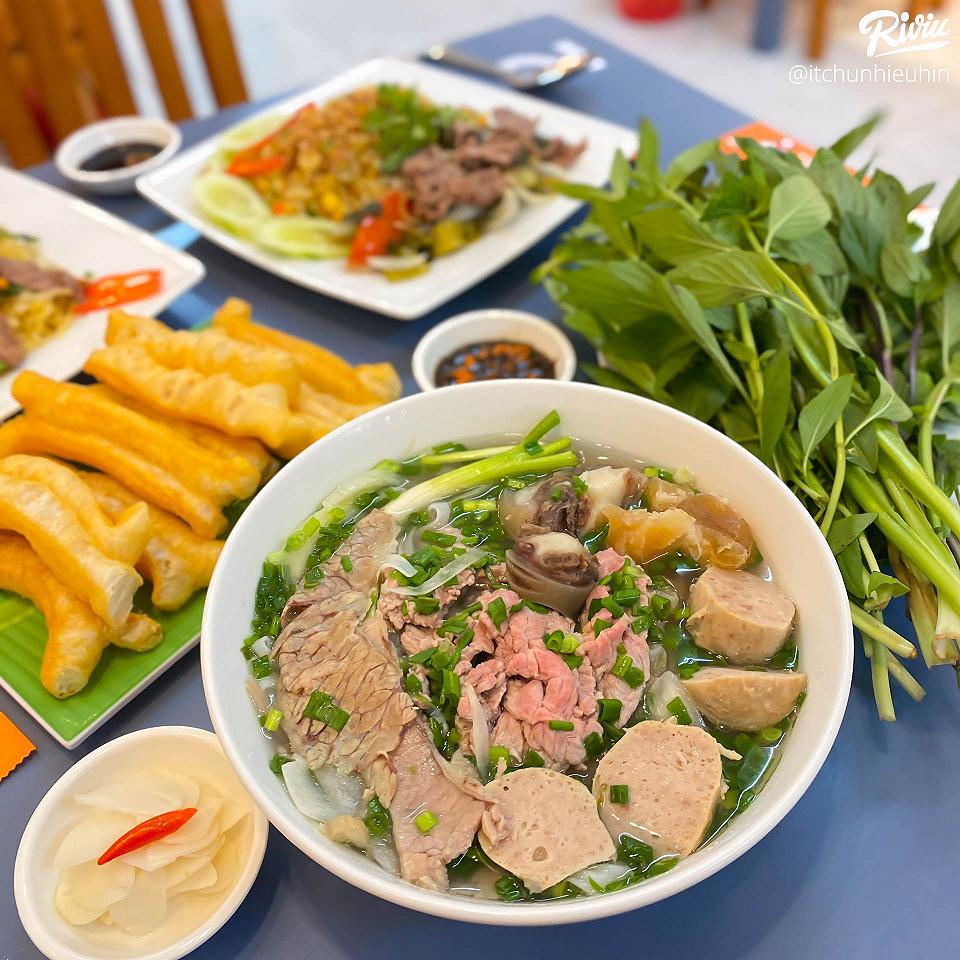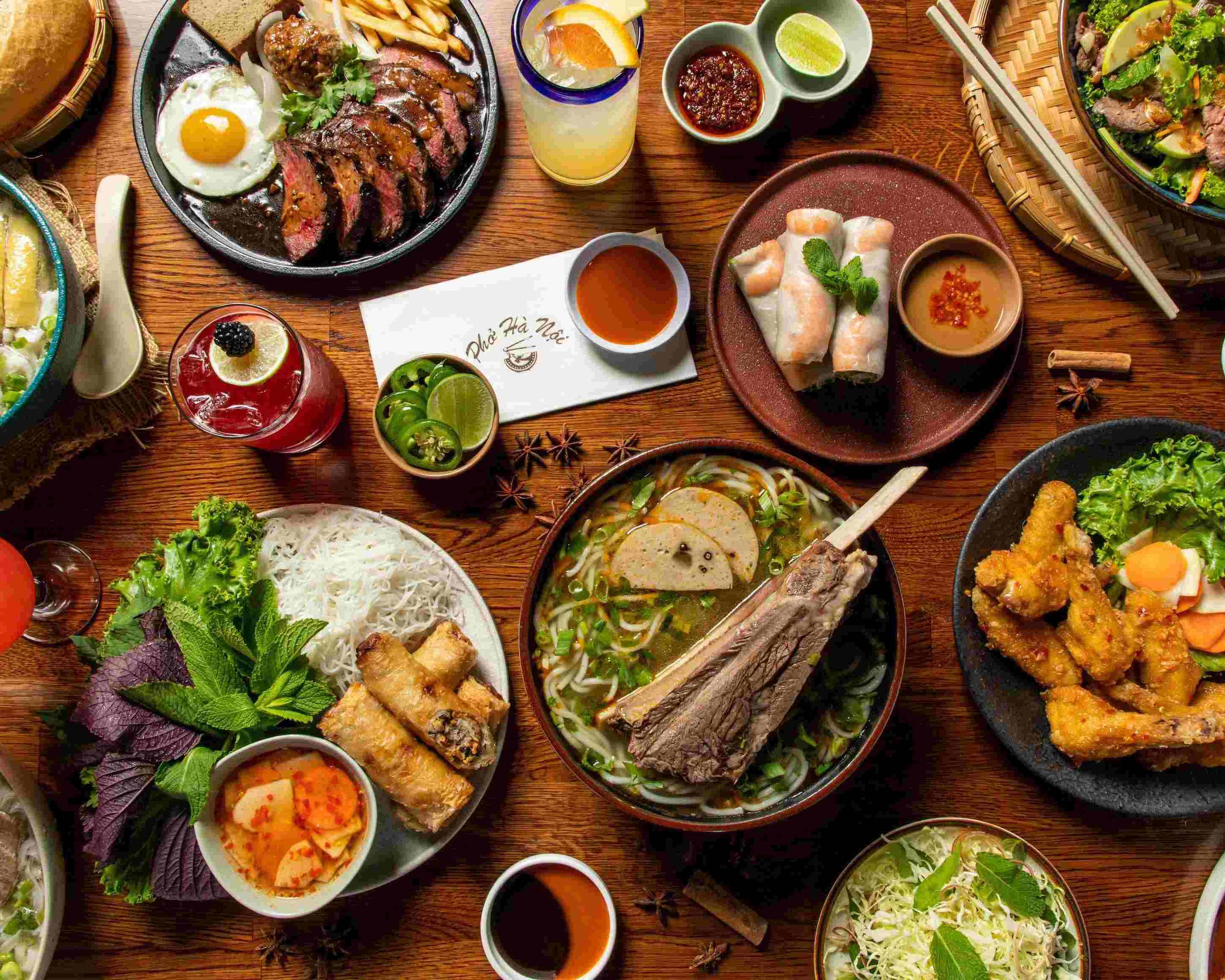Authentic Pho Ha Noi: Taste Of Hanoi
This iconic Vietnamese noodle soup, originating from the nation's capital, features a flavorful broth, tender slices of meat (typically beef or chicken), rice noodles, and a garnish of fresh herbs. Its preparation involves simmering bones and aromatics for hours to create a rich, clear broth that forms the foundation of the dish. Different cuts of meat, such as ti (rare), chn (well-done), or nm (flank), are added according to preference, providing a variety of textures and tastes.
Its significance extends beyond mere sustenance; it is a cultural emblem, deeply intertwined with Vietnamese history and identity. The aromatic broth, the soft noodles, and the fresh herbs combine to create a symphony of flavors that represent Vietnamese culinary artistry. From street stalls to upscale restaurants, the dish is enjoyed nationwide, demonstrating its widespread appeal and enduring presence. Its popularity has also expanded globally, with restaurants serving the dish in numerous countries, allowing individuals worldwide to experience a taste of Vietnamese culture.
The subsequent sections will delve into the specific components, variations, and cultural significance of this notable culinary staple. Further analysis will explore its preparation techniques, regional adaptations, and the factors contributing to its international success. Discussions surrounding the dish's nutritional value and evolving trends will also be presented.
- Lee Cruse Wiki Tv Host Age Wife
- Apple Cofounder Steve Jobs Extreme Diet And
- Who Is Yazmina Gonzalez Meet Spencer Rattler
- Here S How Much Mia Farrow Is
- Casey Burke Bio Age Wiki Facts And
Frequently Asked Questions About Hanoi's Signature Noodle Soup
This section addresses common inquiries regarding the origins, preparation, and characteristics of Hanoi's renowned noodle soup. The following questions and answers aim to provide clarity and enhance understanding of this culinary staple.
Question 1: What distinguishes Hanoi's noodle soup from other regional variations found in Vietnam?
The specific broth recipe, noodle type, and meat cuts are key differentiating factors. Typically, the broth is lighter and clearer, the noodles are thinner, and the beef is often served rare. Northern recipes generally prioritize simplicity and subtle flavors.
- Perry Mattfeld S Wiki Husband Height Net
- Where Is Lorraine Taylor Now Is Lorraine
- Who Is Evelyn Lozada Dating Queens Court
- Which Couples From Twin Love Are Still
- Executive V C Of Dallas Cowboys Charlotte
Question 2: What is the historical origin of Hanoi's noodle soup?
Its origin is generally traced back to the early 20th century in northern Vietnam. Some theories suggest French influence on the broth, combined with traditional Vietnamese ingredients, led to the creation of this dish.
Question 3: What are the essential ingredients required to prepare authentic Hanoi-style noodle soup?
Beef bones (or chicken bones), rice noodles (bnh ph), beef (typically thinly sliced rare beef), and a specific blend of spices, including star anise, cinnamon, cloves, and charred ginger and onion, are crucial. Fresh herbs, such as cilantro and scallions, are essential for garnish.
Question 4: Can Hanoi's noodle soup be made with chicken instead of beef?
Yes, chicken (g) is a popular alternative. The broth preparation remains similar, but chicken bones are used instead of beef bones, resulting in a slightly different flavor profile. The meat is typically shredded chicken.
Question 5: How does the quality of ingredients impact the final taste of the noodle soup?
High-quality ingredients, particularly fresh bones for the broth and well-sourced spices, are critical. The freshness of the herbs and the quality of the meat significantly influence the overall flavor and aroma of the soup.
Question 6: What are some common accompaniments served alongside this type of noodle soup?
Lime wedges, chili sauce (such as Sriracha), fish sauce, and occasionally, quy (fried dough sticks) are frequently offered to enhance the flavor according to individual preferences.
In summary, understanding the subtle nuances of ingredients, preparation techniques, and regional variations is key to appreciating the authentic character of Hanois noodle soup. Its rich history and delicate flavors contribute to its widespread appeal and enduring status as a Vietnamese culinary icon.
The subsequent discussion will explore the detailed preparation process, offering a step-by-step guide to creating a flavorful and authentic bowl of this soup.
Tips for Experiencing Authentic Pho Ha Noi
This section provides guidance on how to identify and enjoy an authentic bowl of this traditional noodle soup, focusing on key characteristics and indicators of quality.
Tip 1: Seek Clarity in the Broth. The broth should be clear, not cloudy. A murky broth indicates improper simmering or the use of substandard bones. The clarity reflects a longer and more careful preparation process.
Tip 2: Assess the Aroma. The aroma should be subtly fragrant, not overpowering. Notes of star anise, cinnamon, and charred ginger should be discernible, indicating a balanced and carefully crafted spice blend. An artificial or overly strong scent suggests artificial flavorings.
Tip 3: Observe the Noodles. Authentic varieties use thin, flat rice noodles that are slightly chewy. Overcooked or mushy noodles detract from the overall experience. Properly cooked noodles retain their texture even in hot broth.
Tip 4: Evaluate the Beef. If the variety features beef, it should be thinly sliced and, ideally, served rare ( ti). The heat of the broth will cook the beef to the desired doneness. Tough or excessively well-done beef indicates a lack of quality or improper preparation.
Tip 5: Consider the Herbs. Fresh herbs, such as cilantro and scallions, are essential garnishes. Wilted or discolored herbs suggest a lack of freshness and can negatively impact the flavor profile. Abundant and vibrant herbs are a sign of attention to detail.
Tip 6: Pay Attention to Local Preferences. Engage with locals and inquire about their preferred establishments. Word-of-mouth recommendations can often lead to more authentic and satisfying experiences than tourist-centric restaurants.
These tips offer a framework for discerning quality and authenticity. By focusing on the broth, aroma, noodles, meat, and herbs, one can increase the likelihood of enjoying a truly exceptional bowl of this notable culinary creation.
The concluding section will summarize the core elements of this dish and its lasting impact on Vietnamese cuisine and culture.
Conclusion
This exploration has detailed the essential elements of pho ha noi, a Vietnamese culinary icon. From its subtly flavored broth to its carefully selected ingredients, the dish represents a balance of tradition and culinary artistry. Its historical roots in Hanoi, combined with its widespread appeal both within Vietnam and internationally, underscore its cultural significance.
The enduring presence of pho ha noi testifies to its adaptability and the enduring appeal of authentic flavors. Its continued evolution, while respecting its core principles, ensures its relevance in the face of changing tastes and global culinary trends. Further research into its nutritional aspects and regional variations would provide a more comprehensive understanding of this globally recognized dish.
- Richard Rohr Net Worth Income Salary Earnings
- Who Is Yazmina Gonzalez Meet Spencer Rattler
- Justin Rutter Found Or Missing Is He
- Kari Karte Has Been Sammy Hagar S
- Bundun Youtube Star Detailed Bio Age Birthday

Phở Hà Nội Món ăn lý tưởng những ngày chớm đông BlogAnChoi

Phở Hà Nội và địa chỉ các quán ăn nổi tiếng Review Villa

Savor the Flavors of Pho Ha Noi in Palo Alto A Culinary Journey